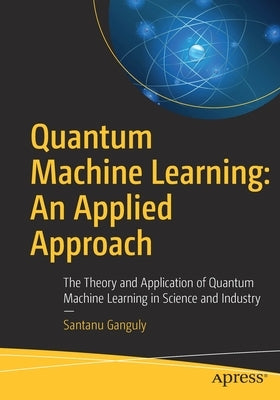Description
Chapter Goal: Introduction to book and topics to be covered
No of pages 12
Sub -Topics
1. Rise of The Quantum Computers
2. Learning from data: AI, ML and Deep Learning
3. Way forward
4. Bird's Eye view of Quantum Machine Learning Algorithms
5. Organisation of the book6. Software and Languages (Linux and Python libraries)
1. Chapter Goal: A comprehensive understanding of key concepts related to Quantum information science and cloud based free access options for quantum computation quantum domain with examples
No of pages: 65
Sub - Topics:
2. Basics of Quantum Computing: Qubits, Bloch sphere and gates
3. Quantum Circuits
4. Quantum Parallelism
5. Quantum Computing by Annealing6. Quantum Computing with Superconducting qubits
7. Other flavours of Quantum Computing
8. Algorithms: Grover, Deutsch, Deutsch-Josza
9. Optimisation theory
10. Hands-on exercises
Chapter 3: Quantum Information Encoding
Chapter Goal: To understand how to encode data in quantum machine learning space with examples
No of pages: 30
Sub - Topics:
26. Initiation and selection of data27. Basis encoding
28. Superposition of inputs
29. Sampling Theory
30. Hamiltonian
31. Amplitude Encoding
32. Other Encoding techniques
33. Hands-on exercises
Chapter 4: QML Algorithms
Chapter Goal: Understanding hardware driven algorithmic computations for quantum machine learning
No of pages: 35
Sub - Topics:
34. Hardware Interface (Quantum Processors)
35. Quantum K-Means and K-Medians36. Quantum Clustering
37. Quantum Classifiers (e.g., nearest neighbours)
38. Support Vector Machine (SVM) in quantum space
39. Hands-on exercises
Chapter 5: Inference
Chapter Goal: Models and methods used in Quantum Machine Learning
No of pages: 35
Sub - Topics:
40. Principal Component Analysis
41. Feature Maps
42. Linear Models
43. Probabilistic Models
44. Hands-on ExercisesChapter 6: Training the Data
Chapter Goal: Training models and techniques of Quantum Machine Learning
No of pages: 105
Sub - Topics:
45. Unsupervised and supervised learning
46. Matrix inversion
47. Amplitude amplification for QML
48. Quantum optimization
49. Travelling Salesman Problem
50. Variational Algorithms
51. QAOA
52. Maxcut Problem
53. VQE (Virtual Quantum Eigensolver)54. Varitaional Classification algorithms
55. Hands-on Exercises
Chapter 7: Quantum Learning Models
Chapter Goal: Learning models and techniques of Quantum Machine Learning
No of pages: 75
Sub - Topics:
56. Optimal state for learning
57. Channel State duality58. Tomography
59. Quantum Neural Networks
60. Quantum Walk
61. Tensor Network applications
62. Hands-on Exercises
Chapter 8: Future of QML in Research and Industry
Chapter Goal: Forward looking prospects of Quantum Machine Learning in industry, enterprises and opportunities
No of pages: 15
Author: Santanu Ganguly
Publisher: Apress
Published: 08/12/2021
Pages: 551
Binding Type: Paperback
Weight: 2.16lbs
Size: 10.00h x 7.00w x 1.16d
ISBN13: 9781484270974
ISBN10: 1484270975
BISAC Categories:
- Computers | Information Theory
- Computers | Artificial Intelligence | General
About the Author
Santanu Ganguly has been working in the fields of quantum technologies, cloud computing, data networking, and security (on research, design, and delivery) for over 21 years. He works in Switzerland and the United Kingdom (UK) for various Silicon Valley vendors and ISPs. He has two postgraduate degrees (one in mathematics and another in observational astrophysics), and research experience and publications in nanoscale photonics and laser spectroscopy. He is currently leading global projects out of the UK related to quantum communication and machine learning, among other technologies.

